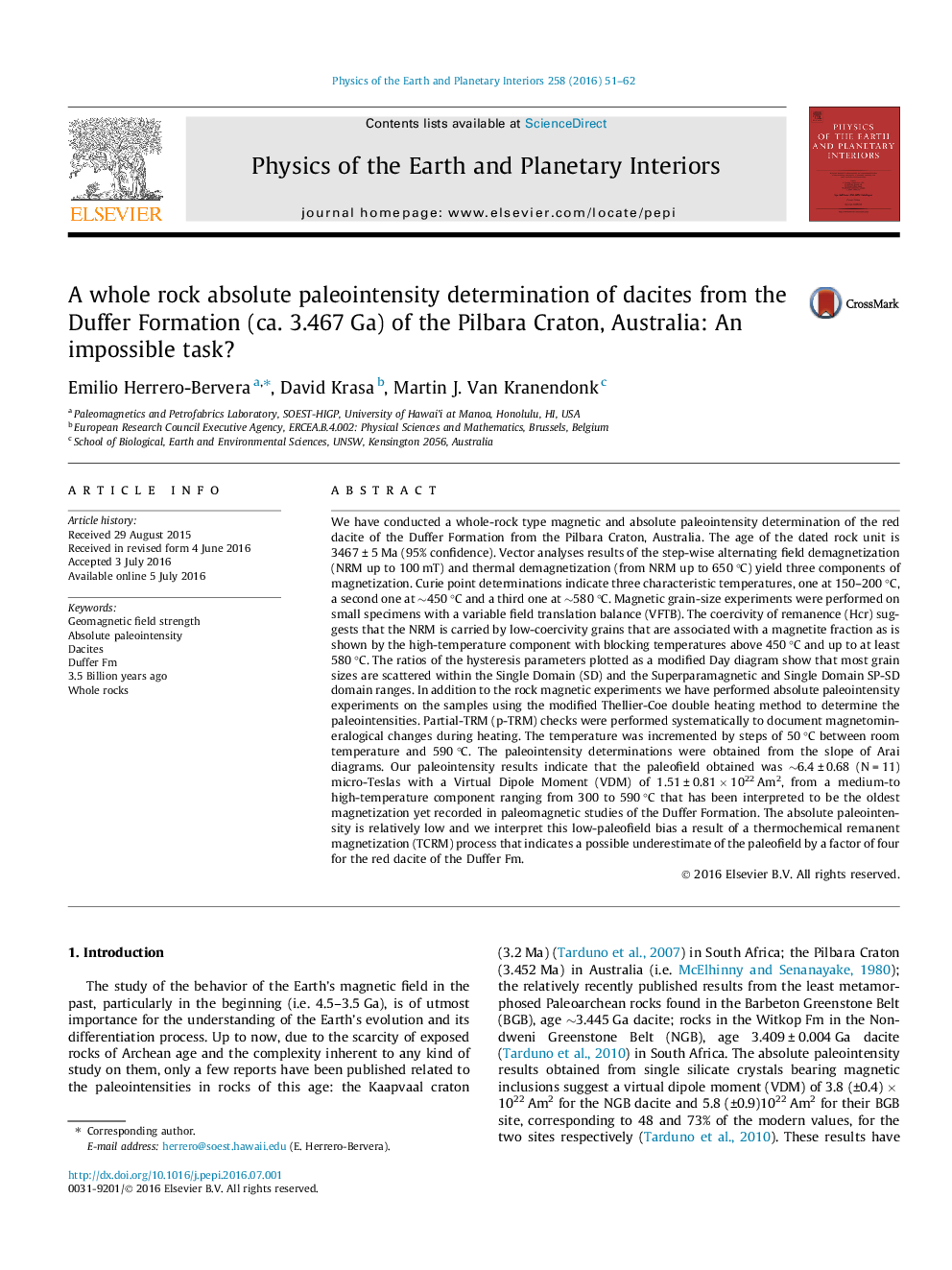| Article ID | Journal | Published Year | Pages | File Type |
|---|---|---|---|---|
| 4741334 | Physics of the Earth and Planetary Interiors | 2016 | 12 Pages |
•This paper is about the effort to determine the absolute paleointensity (PI) of eleven un-oriented samples of the red dacite of the Duffer Formation (ca. 3467 ± 5 Ma) collected from the Pilbara Craton in Western Australia.•The magnetic carriers of magnetization are primarily titanomagnetite and pure magnetite.•We performed PI determinations using the modified Thellier-Coe protocol and we obtained a very high success rate that allowed us to calculate the strength of the geomagnetic field that yielded values of ∼6.4 ± 0.68 (N = 11) micro-Teslas with a Virtual Dipole Moment (VDM) of 1.51 ± 0.81 × 1022 Am2.•We interpreted these results a product of a thermochemical remanent magnetization (TCRM) that indicated a possible underestimation of the paleofield during Archean time by a factor of four.
We have conducted a whole-rock type magnetic and absolute paleointensity determination of the red dacite of the Duffer Formation from the Pilbara Craton, Australia. The age of the dated rock unit is 3467 ± 5 Ma (95% confidence). Vector analyses results of the step-wise alternating field demagnetization (NRM up to 100 mT) and thermal demagnetization (from NRM up to 650 °C) yield three components of magnetization. Curie point determinations indicate three characteristic temperatures, one at 150–200 °C, a second one at ∼450 °C and a third one at ∼580 °C. Magnetic grain-size experiments were performed on small specimens with a variable field translation balance (VFTB). The coercivity of remanence (Hcr) suggests that the NRM is carried by low-coercivity grains that are associated with a magnetite fraction as is shown by the high-temperature component with blocking temperatures above 450 °C and up to at least 580 °C. The ratios of the hysteresis parameters plotted as a modified Day diagram show that most grain sizes are scattered within the Single Domain (SD) and the Superparamagnetic and Single Domain SP-SD domain ranges. In addition to the rock magnetic experiments we have performed absolute paleointensity experiments on the samples using the modified Thellier-Coe double heating method to determine the paleointensities. Partial-TRM (p-TRM) checks were performed systematically to document magnetomineralogical changes during heating. The temperature was incremented by steps of 50 °C between room temperature and 590 °C. The paleointensity determinations were obtained from the slope of Arai diagrams. Our paleointensity results indicate that the paleofield obtained was ∼6.4 ± 0.68 (N = 11) micro-Teslas with a Virtual Dipole Moment (VDM) of 1.51 ± 0.81 × 1022 Am2, from a medium-to high-temperature component ranging from 300 to 590 °C that has been interpreted to be the oldest magnetization yet recorded in paleomagnetic studies of the Duffer Formation. The absolute paleointensity is relatively low and we interpret this low-paleofield bias a result of a thermochemical remanent magnetization (TCRM) process that indicates a possible underestimate of the paleofield by a factor of four for the red dacite of the Duffer Fm.
